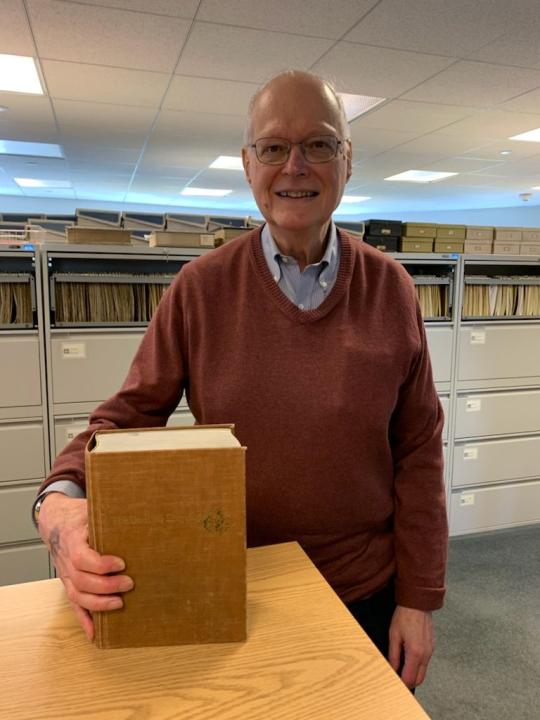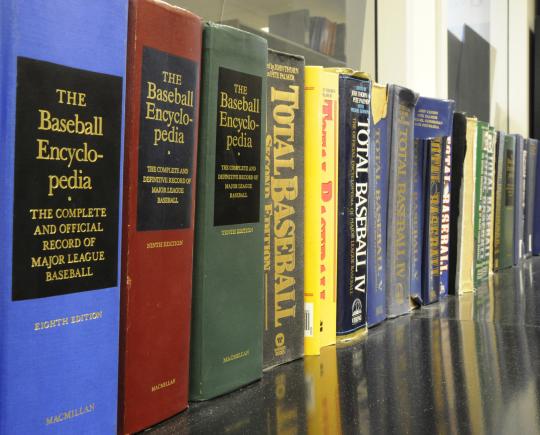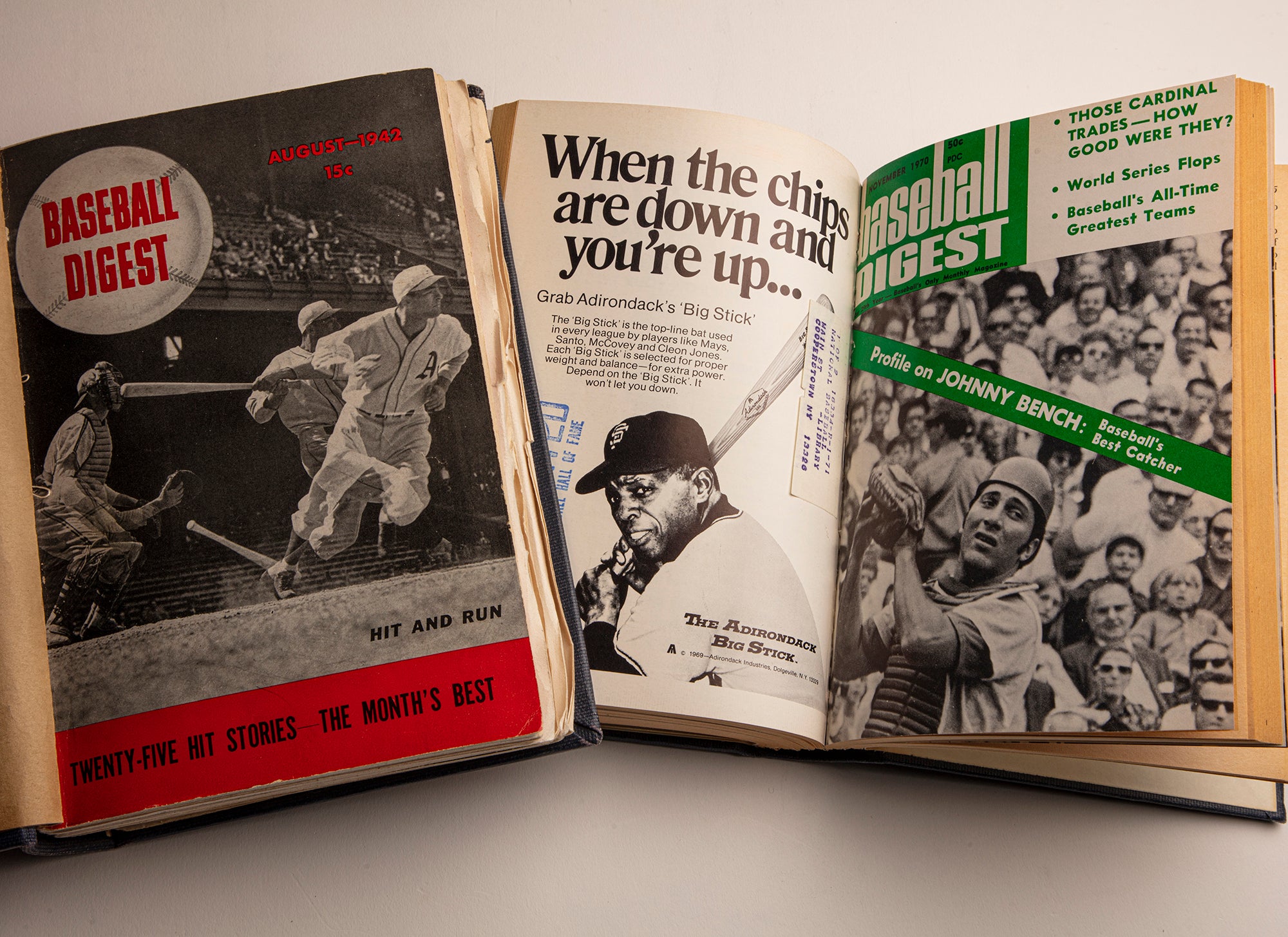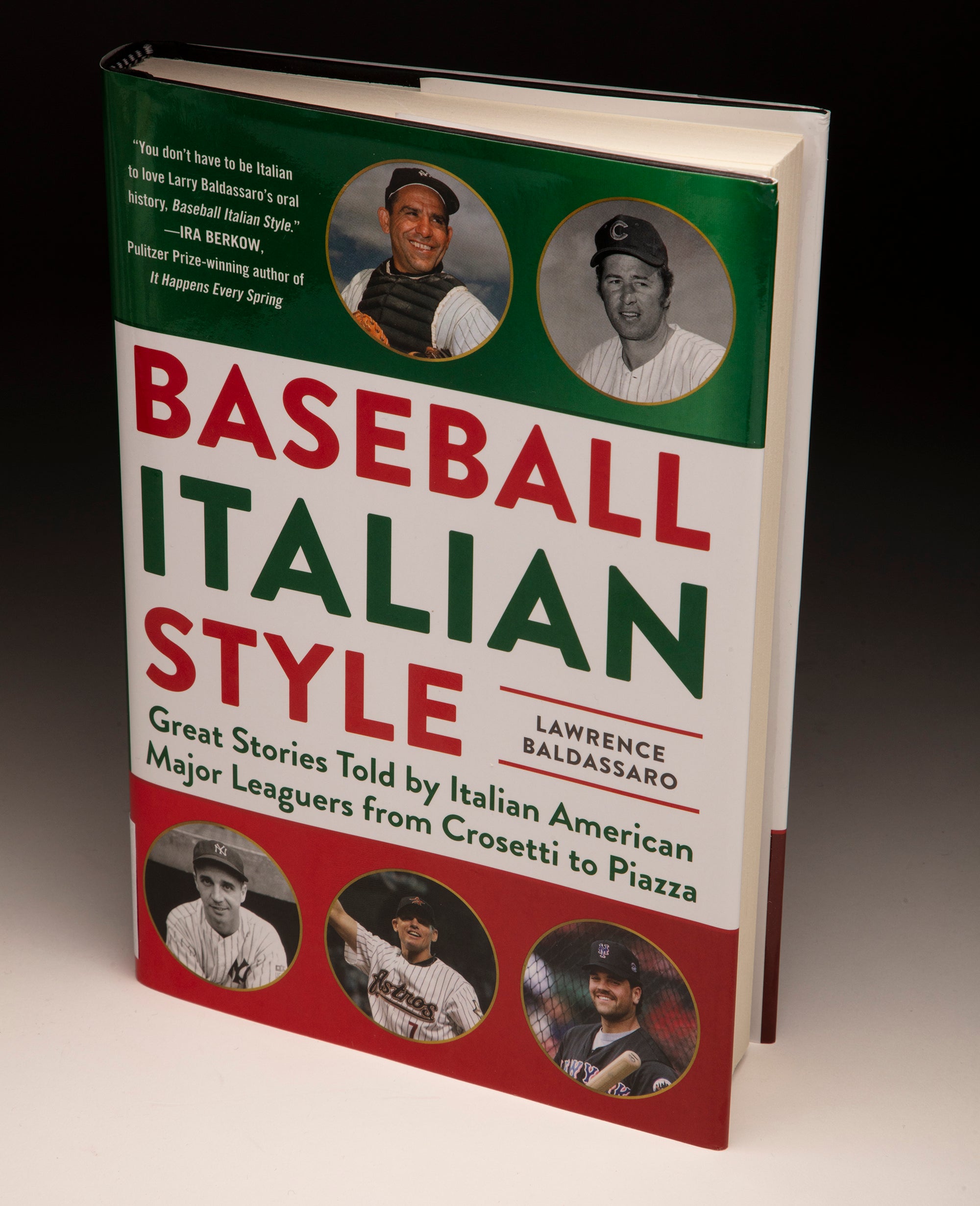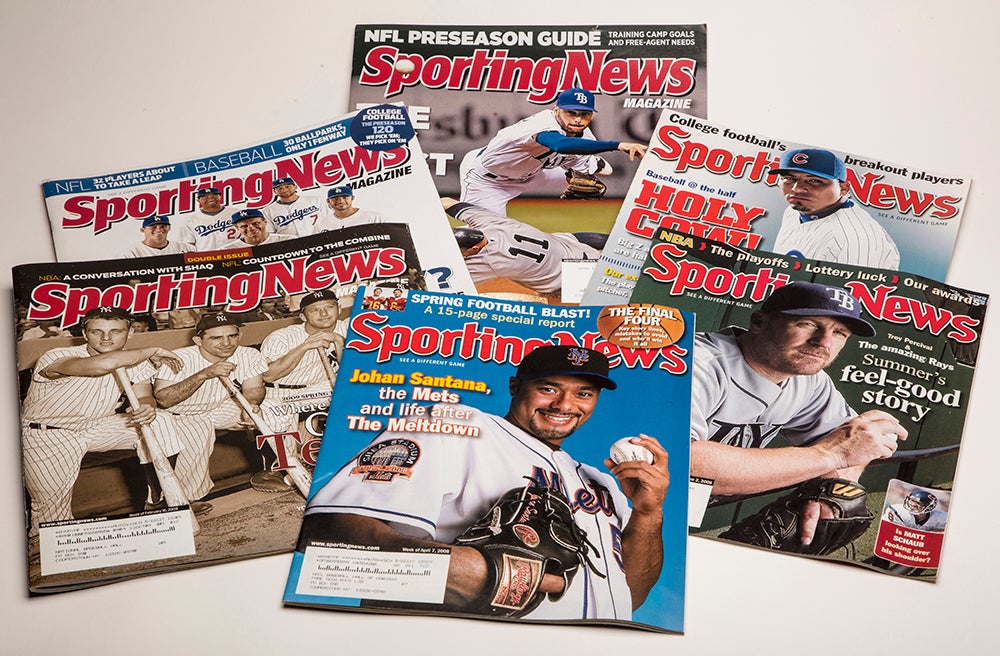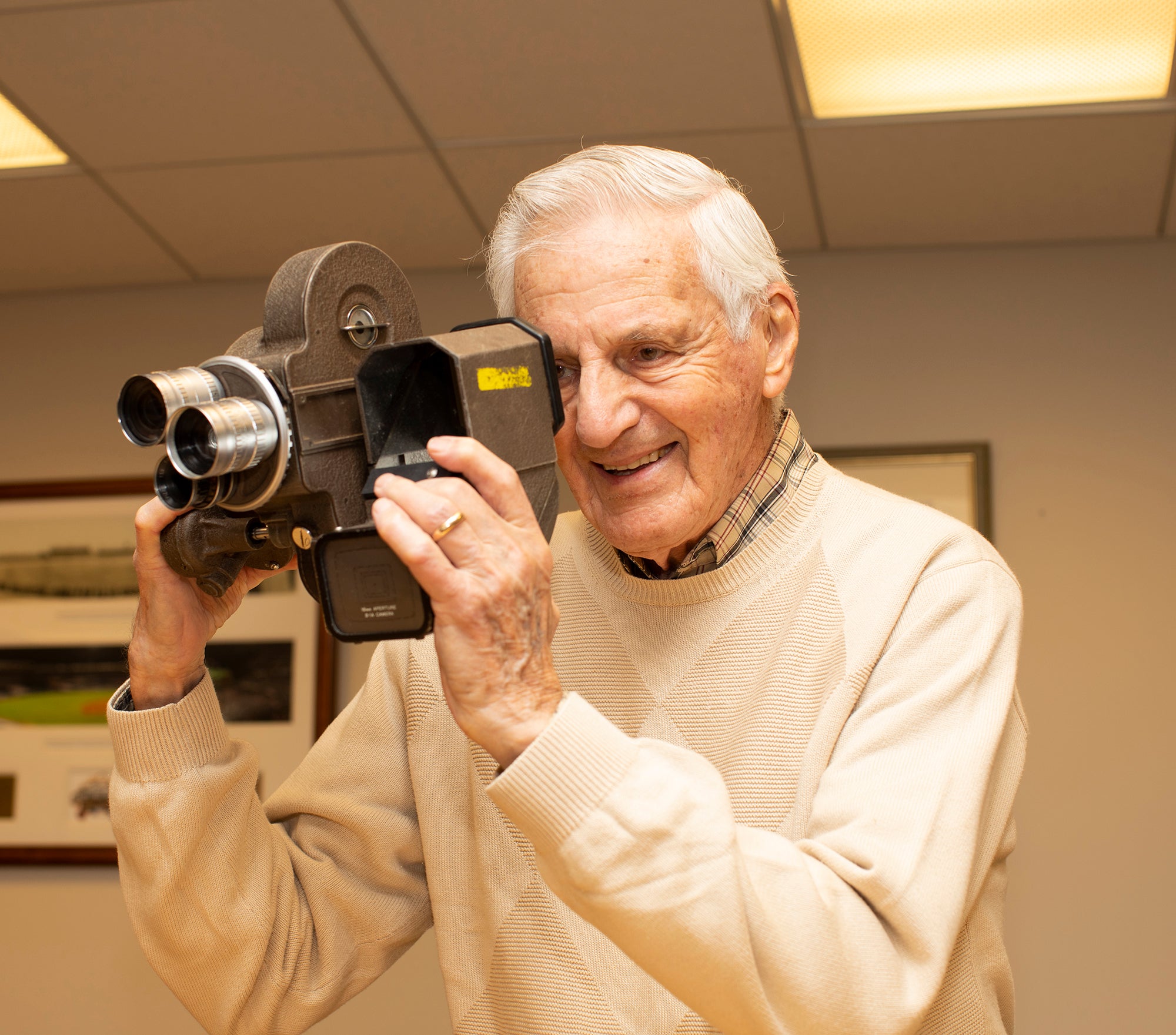- Home
- Our Stories
- David Neft, who pushed baseball research forward, visits Cooperstown
David Neft, who pushed baseball research forward, visits Cooperstown
The name David Neft may be unfamiliar to some baseball fans, but he’s a true pioneer in the sport’s statistical revolution.
As the driving force behind the 1969 publication of the groundbreaking and comprehensive research source, “The Baseball Encyclopedia: The Complete and Official Record of Major League Baseball”, Neft and his colleagues are celebrated for being at the forefront of a constantly evolving cottage industry involving the national pastime.
On April 15, Neft, along with his daughter, son-in-law and three grandchildren, visited the National Baseball Hall of Fame and Museum. No stranger to Cooperstown – the New York City native attended a summer camp on nearby Lake Otsego for five straight years beginning at the age of 10 in 1947 – this was an opportunity to revisit the history of a game he loves and share that affection with his family.
“It is such a great place and such an amazing collection,” he said during a short break in the Baseball Library. “I've been to a lot of other sports museums, but nothing is even close to this. It's just the pinnacle. Looking at Mark McGwire's uniform with my grandchildren, I pointed out how broad the shoulders were. You can't appreciate that until you see the reality up close.”
Much of the source material that was used in the research of "The Baseball Encyclopedia" was later donated to the Baseball Hall of Fame.
Hall of Fame Membership
There is no simpler, and more essential, way to demonstrate your support than to sign on as a Museum Member.
But it’s the 85-year-old Neft’s place in the game that warrants recognition, too. In the mid-1960s, he spearheaded the monumental undertaking, while working as director of research for Information Concepts Incorporated, a computer software firm, to compile a baseball database dating back to 1876. Ultimately, with publisher Macmillan on board, the tome nicknamed “Big Mac” was born.
Today, leaders in the baseball statistics field marvel at his foresight of using dozens of researchers, over a three-year period, spread out across the country to track down previously untapped information to verify, compile consolidate a complete record of the game.
“Any accomplishments we've had in the field of baseball research or analytics in the last 50 years have relied in large part on the foundational work of David and his team of researchers who put together the original Baseball Encyclopedia,” wrote Sean Forman, the founder of Baseball-Reference, in a recent email.
“The book was not only a massive leap forward in our understanding of baseball history, but also was the first publication of its type in any field and brought in a golden age of database-based publications.”
According to David W. Smith, the president of Retrosheet – founded in 1989 for the purpose of computerizing play by play accounts of as many pre-1984 major league games as possible – he was a 21-year-old graduate student when the Baseball Encyclopedia came out.
“I can say without exaggeration that it was inspirational,” Smith said in a recent email. “I had dabbled with baseball data before this, but the ‘Big Mac’ elevated my efforts to a new level. It not only answered many questions I had, but it opened up the possibilities to so many more. I have no doubt that many others had similar reactions. If David had done nothing else, this would be a tremendous legacy.”
Called a baseball library in one volume, “The Baseball Encyclopedia” contained 2,347 pages, weighed 6½ pounds, was four inches thick with dimensions of 10 inches by four inches, and cost $25 in 1969, a hefty price for the time.
“It took just seven hours to print the 2,000 pages,” joked Neft in a 1969 interview, “but a year and a half to tell the computer what to do.”
“The book is so heavy,” wrote Jimmy Breslin in an October 1969 New York Times review, “that the mailman bringing it to the house stumbled and suffered a severe groin injury.”
Advertised as “The Argument Settler” in newspapers across the country when it was first published, it was said to have seven times more data than any previous baseball book, the complete records of 10,400 major league players as well as every World Series and All-Star Game, and correct hundreds of longstanding errors. You could, the ad read, “Literally put at your fingertips every baseball statistic you’ll ever need to know.”
Praise came from Baseball Commissioner Bowie Kuhn, who in a letter inside The Baseball Encyclopedia wrote, “You now have in your possession what I believe to be Baseball’s finest and most complete record book.”
Not only was Hall of Famer Jackie Robinson quoted as calling it, “The best baseball book I’ve ever seen,” but Associated Press Sports Editor Ted Smits said, “Only the combination of painstaking research and a computer could produce this amazing Encyclopedia. It literally tags all the game’s bases.”
Baseball Hall of Fame Historian Lee Allen was brought in early by Neft and was a major contributor to the project. Unfortunately, Allen suffered a fatal heart attack on May 20, 1969, and did not live to see the final product.
“Naturally there has been some opposition from companies already printing and selling baseball record books,” said Allen, in a 1968 interview with The Christian Science Monitor. “But there are so many instances where statistics of longstanding disagree. But with the publication of this new encyclopedia, the fans and press will finally be able to find the answers to a lot of as yet unanswered questions…I feel so good about this that I’ve been working about 70 hours a week, seven days a week.
“It’s impossible to slip an error through the computer. Individual totals have to agree with team totals and team totals have to agree with league totals.”
While there had been baseball statistics books in the past, none measured up to “The Baseball Encyclopedia’s” sweeping breadth of information. One example is the individual player data, with its 17 columns of information on each batter and 19 on each pitcher, far surpassing previous publishing attempts. In a game so dominated by statistics, it had finally put its records in order.
“You really have to speak about the technology, which is what made that book possible at the time that we did it in 1969,” Neft said upon reflection. “It was the first book of any kind published in the United States to be typeset electronically. That was the breakthrough. If you had to do that book with linotype and proofreading 2,300 pages of six-point type, forget it. It was the start of what could be done with baseball research and baseball publishing in the computer age.
“When Turkin and Thompson’s “Encyclopedia of Baseball” came out in 1951, it was a big advance. But they only had three or four fields of statistical information for every player.”
Acclaim has come in a number of ways, such as in 2002, when Sports Illustrated ranked “The Baseball Encyclopedia” 55th on its top 100 sports book of all time. In 2016, the Sporting News, in its 40 most important people in baseball history, ranked Babe Ruth first, Jackie Robinson second, and David Neft 30th, writing, “Neft led the most ambitious and significant baseball research undertaking to that point (and arguably since) in the 1960s.”
Alan Schwarz, author of 2004’s “The Numbers Game: Baseball’s Lifelong Fascination with Statistics”, in a recent email wrote: “David wasn't just some baseball statistics nut - he was a data scientist who came along at the perfect time, leveraging the emerging computer power of the 1960s to code, cross-reference and ultimately untangle the rat's nest that baseball's historical numbers had become.
“In making the “Baseball Encyclopedia”, he and his team brought a verity and majesty to baseball statistics that they had never had before, and have had ever since.”
While nine further editions of “The Baseball Encyclopedia” were released between 1974 and 1996, Neft left I.C.I. after the first edition was published in 1969, but continued in the baseball statistics realm with the publication of 1974’s “The Sports Encyclopedia: Baseball”, a book organized for season and team.
When asked how he looks back now, more than five decades ago, on the publication of “The Baseball Encyclopedia”, Neft smiles and softly said, “With great fondness.”
“I love what it did for the sport. I loved that it opened up an age of tremendous expansion of people doing serious baseball research, which is wonderful,” he said. “But I separate things into two parts. What I was doing, and people who work with me were doing, was researching to fill in the blanks and to correct the statistical data that already existed and used. The other side of it, spearheaded by a friend of mine named Dick Cramer (a founder of STATS, Inc.), was to think of new statistics that can be used to interpret and evaluate performance.”
Bill Francis is the senior research and writing specialist at the National Baseball Hall of Fame and Museum

